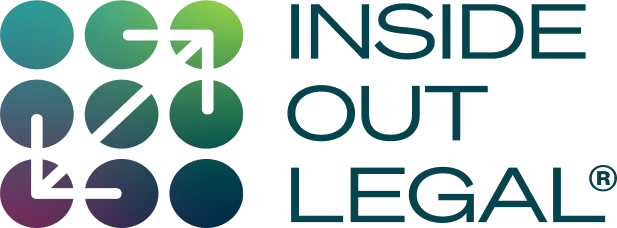
How to Acquire International Trademark Rights via the Madrid Protocol Based on a U.S. Trademark
Sometimes clients will come to us wanting to assert their trademark rights against an infringer only for us to discover the infringement is occurring outside of the United States. Unfortunately, U.S. registration rights only extend as far as the United States itself does. Simply put, if you want to protect your brand globally, you are going to need more than your current registration.
The United States Patent and Trademark Office (USPTO) offers a convenient pathway for U.S. businesses to apply for international trademark protection through the Madrid Protocol.
What Is The Madrid Protocol?
The Madrid Protocol is an international treaty that allows trademark owners to apply for trademark protection in multiple member countries with a single application. As of 2024, there are over 130 countries that are members of the Madrid System, including key markets like the European Union, China, Japan, and Canada.
For U.S. trademark owners, the Madrid Protocol offers a simplified, centralized process to extend their trademark rights to these member countries, rather than filing separate applications in each jurisdiction. The International Bureau of the World Intellectual Property Organization (WIPO) administers the Madrid System and processes all international trademark applications.
Establishing a U.S. Trademark
Before you can use the Madrid Protocol to apply for international trademark rights, you must first have a U.S. trademark application or registration. This is known as the “basic application” or “basic registration,” and it serves as the foundation for your international trademark application.
While you can technically proceed with an international application before your U.S. application has registered, we strongly recommend waiting until your registration issues. Otherwise, any issues that arise during the processing of your U.S. application could cause a domino effect causing your international application to stall as well.
Filing an International Trademark Application Through the USPTO
Once you have a U.S. trademark registration, you can file an international application through the USPTO’s website.
Your international application must be based on the same mark and cover the same or fewer goods and services as your U.S. application or registration. You cannot broaden the scope of protection in the international application beyond what is covered in the U.S. application.
The international application form, called the “MM2 form,” is available on the USPTO’s website. In this form, you will need to include information such as the serial or registration number of your U.S. mark, the countries that you wish to obtain protection in, and the related goods/services.
Once you have filled out the international application form, you must submit it to the USPTO, which acts as the “Office of Origin” for U.S. applicants. The USPTO will certify that the information in your international application matches your U.S. application or registration and then forward the application to the WIPO International Bureau.
There are various required fees that are paid to both the USPTO and WIPO. These fees vary depending on the country or region, and can range from a few hundred to over a thousand dollars per country
Examination by WIPO and Designated Countries
Once your international application is submitted, the WIPO International Bureau reviews the application for compliance with the formalities of the Madrid Protocol. WIPO does not conduct a substantive review of the mark’s register-ability—that is left to the individual trademark offices in each of the countries you designated in your application.
If WIPO finds no issues, the mark will be registered internationally and forwarded to each designated country for examination. At this point will issue an “International Registration” number and publish the mark in the WIPO Gazette of International Marks. Then your mark will be examined by each of the trademark offices of the countries that you are seeking registration in. Like the fees, there is a wide range of processing times that take anywhere from several months to a few years, depending on the country.
During this time, each country’s trademark office may issue objections, known as refusals, based on local law. These objections could be due to conflicts with existing trademarks, lack of distinctiveness, or other legal grounds specific to that country.
Responding to Refusals
If any country issues a refusal for your international trademark application, you will have the opportunity to respond directly to that country’s trademark office. It is important to note that you must work within the legal framework of that country, which may require local representation or attorneys to assist with your response.
Maintenance of International Registrations
Once your international trademark is approved in a designated country, it will remain valid for ten years, as long as the basic U.S. trademark registration remains in good standing. After ten years, you can renew your international registration directly with WIPO for another ten years. Each designated country’s trademark protection is tied to your international registration, meaning that any future changes to your international registration will apply to all the designated countries.
The Madrid Protocol offers U.S. businesses a powerful and cost-effective tool to expand trademark protection globally. By leveraging this system, American companies can apply for trademark rights in multiple countries with a single application, saving time and money. However, it’s important to carefully manage the process, maintain your U.S. trademark registration, and respond to any objections from international trademark offices. With proper planning, businesses can secure the international protection needed to succeed in today’s global marketplace.
Inside Out Legal is your In-House Extension.
We handle a wide variety of matters that are typically handled by corporate in-house legal departments. We are available to provide additional legal resources directly to the general counsel’s office to handle overflow and specific projects. We are also able to provide services directly to the business team itself. Our team regularly counsels clients on how to comply with federal and state regulations that govern healthcare, higher education, information technology, data privacy and security, commercial real estate and various other highly regulated services. We also have extensive experience creating or revising compliance programs on behalf of our clients.
Learn more or schedule a consultation with one of our expert attorneys at https://inoutlaw.com/
